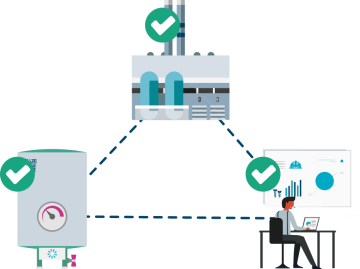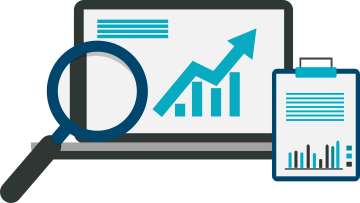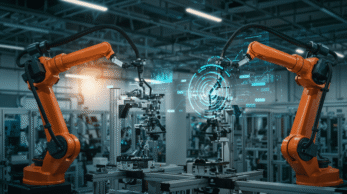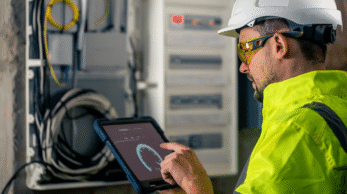To support clients in building a dashboard that is relevant & useful for everyone, the key is to unite management & employee’s visions when setting up KPIs.
Maintenance KPIs: unite field & management visions in CMMS
Key metrics like MTBF (Mean Time Between Failures) are essential for understanding equipment reliability and optimizing maintenance performance. By integrating these indicators into your CMMS, you can align management goals with field operations, ensuring a balanced and effective maintenance strategy.
How to unite a departmental vision and a management vision.
 This article is not intended to convince you of the relevance of setting up KPIs or explain how to improve maintenance operations without analyzing KPIs!
This article is not intended to convince you of the relevance of setting up KPIs or explain how to improve maintenance operations without analyzing KPIs!
There are numerous expectations surrounding Key Performance Indicators (KPIs) and they differ depending on the maturity and size of the company. The key indicators to monitor will vary depending on whether the dashboard is built solely with input from operational employees or from management staff.
How can we unite these two visions, and how can we support our clients in building a dashboard that is relevant and useful for everyone?
Minimizing machine downtime, for example, may seem like a worthwhile goal, but not if it negatively impacts product quality or employee morale, or if it jeopardizes the maintenance strategy in the long term. When we talk about optimizing maintenance activity with our clients, there are dozens of parameters to consider. The challenge then becomes: what maintenance metrics should we focus on?
The essential involvement of management in the CMMS project
It appears essential to involve management in a project to set up a CMMS. Management supports the KPI vision. Management is familiar with the costs associated with the project. At a given moment, management may also want to know the ROI related to the CMMS implementation.
Management must be involved in the project from the initial preparatory meetings, in particular to define the indicators to be monitored.
If you want to measure something in the CMMS solution, you have to collect the right data (downtimes, repair times, time spent, etc.) and define the right analysis fields (by equipment, by family, etc.).
Témoignage
Néa Bogdani, a CMMS project manager at DimoMaint, highlights a common challenge:
There is a glaring discrepancy between the KPIs that management want (costs, analysis between two periods, medium- and long-term vision) and those that real-time professionals want (performance, machinery knowledge, short-term vision, remaining tasks, etc.).
This observation demonstrates the importance of communication between the project’s players from the start so as not to overshadow a vision that could be a priority at a certain moment in the project.
It is important to consider the dashboard project from a standpoint of efficiency and sustainable performance.
Giving meaning to the CMMS project by setting up key indicators
Effective maintenance through proactive use of KPIs
Maintaining successful operations requires an ongoing and proactive approach, where key indicators are leveraged to enhance performance. A high-performance Computerized Mainte
For instance, while one company might track asset performance indicators year-over-year, another might focus on improving team performance over a six-month period. The CMMS must therefore be both flexible and robust, capable of managing and prioritizing the creation and evaluation of various KPIs.
Consider an indicator like this: 90% corrective maintenance to 10% preventive maintenance. At first glance, this might suggest inefficiency. However, the true value lies in observing how the indicator changes over time and assessing the impact of improvements made.
It’s also crucial to recognize that training technicians can significantly reduce the time they spend working on machinery.
Implementing and monitoring KPIs enable managers to refine processes, procedures, and assignments, ultimately improving outcomes. Key Performance Indicators provide team members with clear, tangible goals, enhancing daily productivity and performance.
Néa Bogdani, a CMMS project manager, emphasizes:
KPIs facilitate user acceptance of the CMMS by reducing feelings of micromanagement. Users gain a better understanding of the significance of their actions, seeing direct impacts and results. This makes the maintenance department feel more valued and effective.
The critical role of pre-sales consultants in KPI formalization
KPIs reflect the organizational structure of a company. While a CMMS does not organize a company, it safeguards the established organizational structure. Setting up indicators becomes more straightforward when the organizational setup is considered in advance.
As previously mentioned, various management roles—from industrial managers to CEOs in small and medium enterprises—must be involved and clear about what they aim to control.
A pre-sales consultant plays a crucial role in formalizing the need for indicators. An audit may be suggested to identify areas for improvement, determine a strategy for progress, and define both the dashboard and its maintenance procedures. This task can be challenging in the absence of a well-defined organization. In such cases, DimoMaint can provide organizational support services prior to the CMMS setup.
A common misconception among clients is that reporting is automatically integrated and standardized within the CMMS for all users. During the setup and training phase, the consultant should clearly articulate their vision for the CMMS implementation and provide clear guidelines.
Being well-prepared with clear objectives for the CMMS setup is essential. This preparation helps avoid potential issues, such as a client declaring after three days of training, “I like what you’ve presented, but this won’t work here,” or management requesting a KPI after a month of usage that the CMMS cannot easily accommodate because it wasn’t initially considered.
How to consider your maintenance indicators?
Analyzing maintenance metrics for optimal performance

It is important to first identify the data to be collected: the number of work orders, the number of work requests made, the amount of machine downtime, the number of subcontracting hours, the number of orders, etc.
Next, you must determine the analysis fields to be applied:
• by period
• by type of job, work or activity
• by machine, model, etc.
• by site, building, floor, etc.
• by profession
Field experts will identify indicators to define areas in need of improved operational performance. Management will look for indicators to earn more and spend less by comparing, for example, what a production line produces compared to its maintenance costs.
There are numerous indices related to maintenance:
• Reliability with MTBF (Mean Time Between Failures)
• Maintainability with MTTR (Mean Time to Repair)
• Availability or availability rate: MTBF/(MTTR + MTBF)
Deciding how to present a graph of the indicators is very important!
While it is important for the presentation to be visually pleasing, it cannot be the ultimate aim of an ergonomic approach. The way an indicator is presented, whether it be the type of graph (ratio, pareto principle (80/20), curves, Top 10 and lists), the display method or the colors used, will really depend on the nature of the information presented and its meaning. A curve is not interchangeable with a bar chart.
Each KPI has a graph based on its nature and use.
Many clients use simple and easily identifiable codes to make the indicators visible and share them throughout the company: a green smiley, color codes, weather indicators (sun, cloud, etc.).
CMMS and Business Analytics
A CMMS helps you apply the best maintenance and reliability strategies to your assets and infrastructure by allowing you to measure and track key maintenance KPIs.
When used properly, the company can maximize the value of its investment in a CMMS through better planning, efficiency, increased safety awareness and cost reduction.
CMMS data are static, but contain valuable information that can be used for informed decision-making!
Combined with a Business Intelligence solution, a CMMS allows users to boost reporting and provide a multidimensional analysis to easily find the reasons for certain results.
REMEMBER
- Get management involved ahead of the CMMS project to clearly define the priority indicators and succeed in uniting the departmental and management visions.
- Give meaning to the CMMS project by stimulating team performance
- Ask the right questions to obtain the right indicators that are understandable and visible to everyone.




